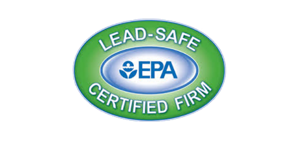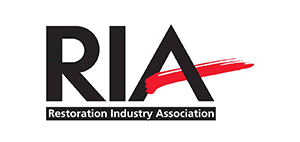As a homeowner, you know the importance of a sturdy and reliable roof. However, even with proper care and maintenance, your roof can still be vulnerable to damage. Understanding the main cause of roof failure is essential for safeguarding your roof and protecting your investment for years to come.
So, what is the number one cause of roof failure? We will explore this question and more in our comprehensive guide below. By the end of this article, you will have a better understanding of the common causes of roof failure, how weather impacts your roof, the role of maintenance in preventing failure, and most importantly, the number one cause of roof failure that you need to be aware of.
Key Takeaways:
- Understanding the number one cause of roof failure is crucial for protecting your home and investment.
- Common causes of roof failure include age, weather conditions, poor installation, and lack of maintenance.
- The impact of weather, such as heavy rain, snow, and windstorms, can significantly impact your roof’s health.
- Proper maintenance, including regular inspections and routine cleaning, is essential for preventing roof failure.
- The number one cause of roof failure is the lack of proper ventilation, which can lead to moisture, mold growth, and shingle deterioration.
Common Causes of Roof Failure
Roofs are designed to protect your home from external elements such as rain, snow, and winds. However, over time, the continuous exposure to various factors can lead to extensive damage and potential roof failure. Here are some of the most common causes of roof failure:
- Age: As roofs age, they become more vulnerable to damage and deterioration. Most roofs have a lifespan of about 20-25 years, after which they need to be replaced.
- Weather conditions: Extreme weather conditions such as heavy rain, hail, snow, and high winds can cause significant damage to roofs, particularly if they are older or in poor condition.
- Poor installation: Improper installation can lead to leaks and other issues that can compromise the integrity of the roof.
- Lack of maintenance: Regular roof maintenance is essential for catching potential issues early before they become major problems.
- Improper ventilation: Inadequate ventilation can cause heat and moisture to build up in the attic, leading to damage to the roof’s structure, shingles, and other components.
To ensure the longevity of your roof, it is crucial to identify and address these common causes of failure. In the following sections, we will explore the impact of weather on roof health, the role of maintenance in preventing failure, and the number one cause of roof failure: lack of proper ventilation.
The Impact of Weather on Roof Health
Weather can significantly impact the health of your roof. From extreme heat to heavy rain, snow, windstorms, and hail, different weather conditions can cause damage that can eventually lead to failure.
During extreme heat, your roof can expand and contract, which can lead to cracks and leaks. Heavy rain can cause pooling on your roof, which can put excessive weight and pressure on certain areas and lead to leaks and water damage. Snow and ice can accumulate on your roof, adding a significant load, which can cause structural damage or even collapse. Windstorms can cause shingles to lift or even blow off entirely, leaving your roof vulnerable to leaks and other types of damage. Finally, hail can puncture or dent your shingles, causing immediate damage and accelerating the deterioration of your roof over time.
It is essential to understand the potential risks associated with these different weather conditions and take preventative steps to protect your roof. Regular inspections can help you identify any vulnerable areas, while repairs and maintenance tasks such as cleaning gutters, removing debris, and ensuring proper ventilation can help reduce the impact of weather on your roof’s health.
You can also take proactive steps to mitigate the impact of weather on your roof. For example, installing a protective membrane or coating can help protect your roof from excessive heat and UV rays. Installing a gutter guard can help prevent debris from accumulating in your gutters and causing blockages during heavy rain. You may also consider upgrading your shingles to a more durable material that can better withstand extreme weather conditions.
By being aware of how weather can impact your roof and taking strategic preventative steps, you can help safeguard your roof from damage and prolong its lifespan.
The Role of Roof Maintenance in Preventing Failure
To safeguard your roof from failure, it is crucial to prioritize regular roof maintenance. Without proper attention, your roof can deteriorate faster and become more vulnerable to damage. Here are some essential roof maintenance tasks that can help prevent roof failure:
| Task | Frequency |
|---|---|
| Inspection of your roof for damage and leaks | At least once a year, after severe weather conditions, and before and after winter |
| Cleaning gutters and downspouts to remove debris and leaves that can block water flow | At least twice a year |
| Trimming tree branches and vegetation that are touching or close to your roof | Once or twice a year |
| Checking for proper ventilation to prevent moisture accumulation | At least once a year |
| Repairing any minor damage as soon as it is detected | Immediately |
By implementing these tasks, you can significantly extend the life of your roof and prevent any potential failure. In addition to these tasks, make sure to hire a professional roofing contractor when necessary to provide a more in-depth inspection and maintenance of your roof.
Remember, regular roof maintenance is the key to prevent roof failure. Don’t wait until it’s too late to safeguard your roof.
The Number One Cause of Roof Failure: Lack of Proper Ventilation
After analyzing the various factors that can lead to roof failure, it is clear that lack of proper ventilation tops the list as the number one cause. Proper ventilation plays a crucial role in ensuring the health and longevity of your roof, yet it is often overlooked or neglected.
When your roof lacks adequate ventilation, it can lead to a host of problems that can compromise its structural integrity and lead to failure. One of the primary issues caused by poor ventilation is the accumulation of moisture, which can seep into the insulation and cause it to deteriorate over time. This can result in higher energy bills, as your HVAC system works harder to maintain a consistent temperature.
In addition, inadequate ventilation can cause mold growth, which is not only unsightly but can also pose serious health risks to you and your family. Mold growth can occur in areas where moisture is present, such as the attic or crawl space, and can spread rapidly if left unchecked.
Another consequence of improper ventilation is accelerated shingle deterioration. When your roof is exposed to high levels of heat and moisture, the shingles can begin to curl or warp, leading to premature failure. This can result in costly repairs or even a complete roof replacement.
Proper roof ventilation can address all of these issues and more. By allowing air to circulate freely, it can reduce moisture buildup, prevent mold growth, and extend the lifespan of your shingles. It can also help regulate the temperature in your attic, making your home more energy-efficient and comfortable.
If you suspect that your roof may be lacking proper ventilation, it is important to have it inspected by a professional. They can assess the current ventilation system and make recommendations for improvement. Investing in proper ventilation now can save you thousands of dollars in repairs down the road and safeguard your home from roof failure.
Conclusion
Protecting your roof from failure is crucial for maintaining the integrity of your home. By understanding the common causes of roof damage, such as age, weather conditions, poor installation, and lack of maintenance, you can identify potential risks and take necessary preventative measures.
In addition, recognizing the impact of weather, including extreme heat, heavy rain, snow, windstorms, and hail, and prioritizing regular maintenance can go a long way in safeguarding your roof.
However, the number one cause of roof failure is lack of proper ventilation. Without adequate ventilation, moisture can accumulate in your attic, leading to mold growth, accelerated shingle deterioration, and potential structural damage.
To prevent roof failure due to lack of ventilation, consider consulting with a professional roofing contractor to ensure your roof’s ventilation is up to standards. By implementing a proactive maintenance plan and addressing any ventilation issues promptly, you can significantly enhance the lifespan of your roof and protect your investment for years to come.
FAQ
What is the number one cause of roof failure?
The number one cause of roof failure is the lack of proper ventilation. Inadequate ventilation can lead to moisture buildup, mold growth, shingle deterioration, and even structural damage.
What are the common causes of roof failure?
There are several common causes of roof failure, including age, weather conditions (such as extreme heat, heavy rain, snow, windstorms, and hail), poor installation, lack of maintenance, and more. All of these factors can contribute to roof damage and failure.
How does weather impact roof health?
Different weather conditions can have a significant impact on the health of your roof. Extreme heat can cause shingle damage, heavy rain can lead to leaks and water damage, snow can cause excessive weight, windstorms can loosen or displace shingles, and hail can cause dents and cracks. It is important to consider weather conditions when assessing the condition of your roof.
What is the role of roof maintenance in preventing failure?
Regular roof maintenance is essential in preventing failure. It involves regular inspections, timely repairs, and routine tasks such as cleaning gutters, removing debris, and ensuring proper ventilation. By proactively maintaining your roof, you can mitigate the risk of failure and prolong its lifespan.
How does lack of proper ventilation contribute to roof failure?
Lack of proper ventilation is the number one cause of roof failure. Without adequate ventilation, moisture can become trapped in your attic, leading to the formation of mold, deterioration of shingles, and potential structural damage. Proper ventilation is necessary to maintain a healthy and functional roof.





















